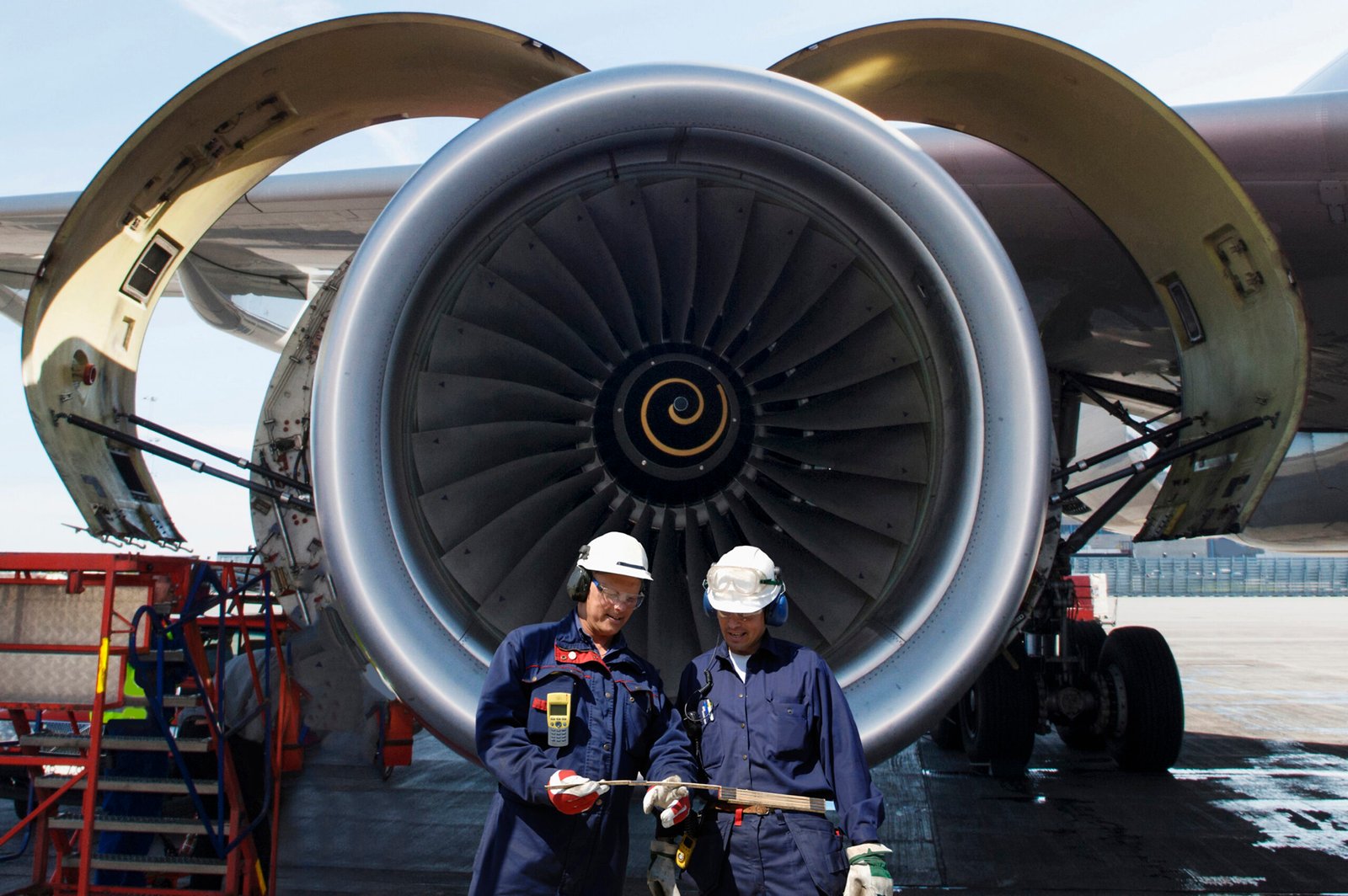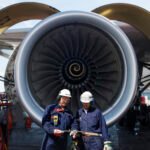Aviation
A Pilot’s Perspective: Insider Tips for Aspiring Aviators
Embarking on the journey to become a pilot is an exhilarating adventure filled with dreams of soaring through the skies. However, that path can be paved with challenges and uncertainties. As an aviator who’s navigated this course, I’m excited to share essential insights, particularly tailored for those looking to take flight in their aviation careers.
*Choosing the Right Aviation School**
One of the most crucial steps in your journey is selecting an aviation school that aligns with your goals. Aviation schools typically offer various types of courses catering to different aspirations:
1. **Private Pilot License (PPL):** Ideal for beginners, this course introduces you to the fundamentals of flying and grants you permission to fly solo or with passengers under visual flight rules.
2. **Commercial Pilot License (CPL):** Aimed at serious aviators wanting to turn their passion into a profession, this program dives deeper into navigation, meteorology, and advanced flying techniques.
3. **Instrument Rating:** For those who wish to fly in varying weather conditions, this training teaches pilots how to control aircraft using instruments rather than visual references.
4. **Flight Instructor Certificate (CFI):** If sharing knowledge excites you, consider becoming a flight instructor. This certification allows you to teach aspiring pilots while honing your own skills.
5. **Airline Transport Pilot License (ATPL):** The pinnacle of pilot certifications, this license is required for those aiming for careers as airline captains or other high-level positions within commercial aviation.
Each of these pathways opens doors not only to personal fulfillment but also to diverse career opportunities across the aviation sector.
*Explore Online Resources**
In today’s digital age, connecting with fellow enthusiasts and seasoned professionals has never been easier. Here are some valuable online resources where aspiring aviators can find inspiration and information:
**Aviation Blogs:** Websites like *The Flight Deck* and *Aviation Weekly* provide insights from industry veterans about trends, tips, and experiences that could shape your understanding of aviation.
**Websites:** Check out *SkyVector*, which offers route planning tools alongside aeronautical charts crucial for every pilot’s toolkit.
**Social Media Sites:** Platforms like Instagram and Twitter are brimming with accounts dedicated solely to aviation content—follow hashtags like #PilotLife or #AviationGeek for daily doses of aerial inspiration!
Engaging with these platforms can help you stay updated on industry developments while also allowing you to network within the community.
*Training Through FAA-Approved Schools**
When it comes down to practical training, FAA-approved flight schools are indispensable resources that provide structured learning environments equipped with top-notch facilities:
1. **Flight Schools:** These institutions often feature experienced instructors and modern fleets that cover everything from basic flying skills to advanced maneuvers necessary for commercial piloting.
2. **Airplane Schools:** These specialized schools focus on specific aircraft types or capabilities—perfect if you have a particular interest in flying certain planes!
3. **Simulators:** Many programs now incorporate state-of-the-art simulators that mimic real-world flying scenarios without leaving the ground! This technology helps enhance decision-making skills under pressure while ensuring safety during initial training phases.

In conclusion, whether you’re just starting your journey or looking toward advanced training options, remember: every pilot was once an aspiring aviator fueled by passion and determination. With the right education path chosen from reputable sources online or through FAA-approved schools—and a savvy approach towards networking—you’ll be well on your way toward achieving those lofty dreams! So gear up; adventure awaits!
Aviation Careers: Navigating the Skies of Opportunity
The aviation industry is a sprawling landscape of opportunities, beckoning those who dream of soaring through the skies. Whether you envision yourself as a pilot, air traffic controller, aircraft mechanic, or flight attendant, various educational pathways can set you on the right course. Understanding what aviation schools offer can help you find your niche in this dynamic field.
*Types of Aviation Courses**
Aviation schools provide a plethora of courses tailored to different career aspirations. Here are some types to consider:
1. **Pilot Training Programs**: These courses focus on imparting essential flying skills and knowledge about aircraft operations. They often include both ground school—where students learn aerodynamics, navigation, and weather—and in-flight training.
2. **Air Traffic Control (ATC) Programs**: ATC courses teach students how to manage aircraft safely and efficiently within controlled airspace. Aspiring controllers gain insight into communication protocols and radar systems through simulation exercises.
3. **Aircraft Maintenance Engineering**: This technical pathway equips students with hands-on skills required for maintaining and repairing aircraft. Courses cover everything from electrical systems to structural integrity and comply with FAA regulations.
4. **Aviation Management Degrees**: Ideal for those aiming for leadership roles in airlines or airports, these programs blend business principles with aviation-specific subjects like logistics and safety management.
5. **Flight Dispatch Training**: Flight dispatchers play a crucial role in ensuring that flights operate smoothly by planning routes and managing schedules. Specialized courses prepare students for this fast-paced environment.
6. **Specialized Certifications**: Many aviation schools also offer short-term certifications in areas such as drone piloting or safety management systems—perfect for those looking to enhance their employability without committing to long-term education.
With so many options available, potential aviators have plenty of choices tailored to their interests!
*Online Resources for Aviation Enthusiasts**
In today’s digital age, staying informed is more accessible than ever! There’s an abundance of blogs, websites, and social media platforms dedicated to aviation topics:
*Blogs*: Check out sites like *AirlineReporter*, which features news about airlines; *Flying Magazine*, offering tips from seasoned pilots; or *The Air Current*, focusing on industry analysis.
*Websites*: The FAA’s official site is invaluable for information on regulations and licensing requirements. Additionally, organizations like AOPA (Aircraft Owners and Pilots Association) provide resources tailored for pilots at all levels.
*Social Media*: Platforms like Instagram showcase stunning aerial photography under hashtags such as #aviationlovers or #flyinghigh. Twitter accounts like @AvGeekGirl share daily insights into aviation trends that can help broaden your knowledge base.
*FAA Flight Schools & Simulators**
When it comes to practical training, FAA-approved flight schools are your best bet—they meet strict guidelines ensuring quality education. Institutions such as Embry-Riddle Aeronautical University and ATP Flight School have garnered reputations as leading providers of pilot training across the United States.


For those seeking hands-on experience without immediate access to an aircraft, simulators serve as excellent alternatives! Advanced flight simulators mimic real-life scenarios allowing aspiring pilots to practice maneuvers safely before taking off into the skies themselves.
As you embark on this exciting journey through the world of aviation careers, remember that every takeoff begins with a solid foundation—education being paramount! Equip yourself with knowledge from reputable sources while honing your skills at top-notch institutions, paving your way toward a rewarding career navigating the skies of opportunity!
The Future of Flight: Innovations Reshaping the Aviation Industry
The aviation industry stands on the precipice of a remarkable transformation. As technology surges ahead, educational institutions are evolving to meet the demands of this ever-changing field. Today’s aspiring aviators have access to an array of specialized aviation schools offering diverse courses that cater to their ambitions.
*Aviation Schools and Course Types**
In the realm of pilot training, schools typically fall into several categories, each designed to fulfill specific needs.
1. **Traditional Flight Schools**: These institutions focus primarily on hands-on flight training, blending ground school with actual flying hours. Students often earn their Private Pilot License (PPL) and move on to more advanced certifications.
2. **Community Colleges**: Many community colleges offer associate degrees in Aviation Technology or Professional Pilot Programs. These programs provide a more comprehensive education, blending technical skills with general studies.
3. **Four-Year Universities**: For those seeking a bachelor’s degree, universities like Embry-Riddle Aeronautical University or Purdue University offer robust aviation programs that cover everything from aeronautics to air traffic control and management.
4. **Online Courses and Simulator Training**: With technological advancements, online platforms now provide virtual training modules for aspiring pilots or mechanics who want flexibility in their learning schedules without sacrificing quality education.
5. **Specialized Training Centers**: Focused on niche areas such as drone piloting or helicopter operations, these centers equip students with cutting-edge skills tailored for specific segments of aviation.
As future aviators embark on their educational journeys, they can also tap into a wealth of resources available online through blogs and websites dedicated to all things aviation.
*Aviation Blogs and Websites**
The digital landscape hosts numerous blogs and websites teeming with valuable insights about the industry:
**AirlineReporter.com**: This site covers airline news and travel tips while sharing personal experiences.
**FlyingMag.com**: A go-to resource for enthusiastic pilots featuring articles on aircraft reviews and pilot stories.
**Jetwhine.com**: Offering commentary on various facets of aviation, from policy discussions to technological innovations.
**AvGeekery.com**: Celebrating aviation enthusiasts’ passion through exciting stories about aircraft history and modern developments.
Social media platforms have also become pivotal in connecting aviation lovers:
Twitter has vibrant communities under hashtags like #AvGeek or #PilotLife where professionals share experiences.
Instagram showcases breathtaking aerial photographs through accounts like @aviationdaily or @planespotting which inspire future generations.
Facebook groups dedicated to pilots allow members to exchange tips and networking opportunities seamlessly.
*FAA Flight Schools & Simulators**
For practical training rigorously aligned with government standards, FAA-approved flight schools provide structured curricula ensuring student safety while honing essential skills. These accredited institutions offer comprehensive programs covering everything from private licenses to advanced ratings.
Additionally, simulators play an increasingly crucial role in pilot training by providing safe environments where students can practice emergency procedures without real-world risks. Advanced full-motion simulators accurately replicate cockpit environments allowing trainees to encounter various scenarios—essential for building confidence before taking real flights.
In conclusion, as innovations continue reshaping the horizon of flight education—from diverse course offerings at aviation schools to dynamic online platforms for knowledge-sharing—the future looks promisingly bright for aspiring aviators around the globe. The journey may be challenging but is undoubtedly exhilarating; equipped with cutting-edge tools and information today’s learners are poised not just to fly but soar!

Soaring High: The Future of Aviation Technology
The aviation industry is on the cusp of a remarkable transformation, driven by technological innovations and a surge in interest among aspiring pilots and aviation enthusiasts. As we soar into the future, understanding the educational pathways available can empower the next generation of aviators.
### Aviation Schools: Types of Courses
Aviation schools offer an array of programs tailored to fit various interests within the field. For instance, if you dream of becoming a pilot, look for flight training programs that provide Private Pilot License (PPL), Instrument Rating (IR), and Commercial Pilot License (CPL) courses. These comprehensive programs often blend classroom instruction with hands-on flight experience, allowing students to gain practical skills using state-of-the-art aircraft.
For those not aiming to take to the skies themselves, there are numerous options in aviation management or maintenance programs. Aviation management courses equip students with knowledge about airline operations, airport management, safety regulations, and more—perfect for those interested in the business side of aviation. Moreover, aircraft maintenance technician (AMT) programs are vital for anyone looking to work behind the scenes; they cover everything from basic mechanical skills to advanced avionics systems.
Furthermore, specialized training is available in areas such as drone technology and unmanned aerial systems (UAS). With drones revolutionizing industries from agriculture to surveillance, these courses prepare students for careers at the forefront of this rapidly evolving sector.
### Aviation Blogs, Websites & Social Media Sites
To keep abreast of advancements in aviation technology and trends within the industry, several online resources are invaluable. Blogs like “AirlineReporter” provide insights into travel experiences and industry news while “Flying Magazine” covers everything from pilot tips to gear reviews. For those who appreciate multimedia content, “FlightChops” on YouTube captivates audiences with engaging flight videos that blend education and entertainment.
Social media platforms also play a pivotal role in connecting aviation enthusiasts worldwide. Twitter accounts like @AviationWeek feature breaking news updates alongside insightful articles on emerging technologies. Instagram users can follow accounts like @aircraftspotting for breathtaking glimpses of planes around the globe or @pilotlife for a peek into daily life as a pilot.
Additionally, Facebook groups such as “Aviation Enthusiasts” foster community discussions where members share their experiences and advice on everything from flight training tips to career opportunities.
### FAA Flight Schools: Airplane Schools & Simulators
When considering flight training options in America, FAA-accredited schools stand out for their rigorous standards and quality education. Organizations like “ATP Flight School” offer accelerated programs designed for individuals eager to fast-track their journey toward becoming professional pilots.

Moreover, simulator training has revolutionized how aspiring pilots learn essential skills without leaving solid ground. Advanced simulators mimic real-world flying conditions with astonishing accuracy—providing trainees an opportunity to practice emergency scenarios or refine their navigation techniques without risk or expense associated with actual flight hours.
In conclusion, as we gaze toward a future filled with possibilities—from electric aircraft designs reducing our carbon footprint to drones redefining logistics—the need for skilled aviators remains paramount. By embracing diverse educational paths through various aviation schools combined with leveraging online resources and innovative simulation technologies, future aviators can prepare themselves not only to navigate today’s skies but also shape tomorrow’s aerial landscape—and that’s truly soaring high!
From Local Airports to Global Networks: The Evolution of Air Travel
The aviation industry has undergone a remarkable transformation over the past century, evolving from small, local airports serving regional flights to an expansive network connecting people and goods across the globe. This evolution is not just limited to aircraft technology but also encompasses training, resources, and information sharing within the field. As we explore the multifaceted world of aviation today, we’ll delve into various aviation schools offering specialized courses, essential online resources for enthusiasts and professionals alike, as well as FAA-approved flight schools.

### Aviation Schools by Types of Courses
Education in aviation is diverse and tailored to meet the needs of aspiring pilots and other industry professionals. Here are some common types of courses offered at various aviation schools:
1. **Pilot Training Programs**: These programs include Private Pilot License (PPL), Instrument Rating (IR), Commercial Pilot License (CPL), and Airline Transport Pilot License (ATPL). Each course builds upon the last, equipping students with necessary skills for various levels of flying.
2. **Aircraft Maintenance**: For those interested in the technical side, aircraft maintenance programs cover subjects such as airframe systems, powerplant mechanics, and avionics. Graduates often pursue certifications through the FAA.
3. **Aviation Management**: These courses focus on airport operations, airline management, and logistics. They prepare students for administrative roles within airlines or regulatory agencies.
4. **Flight Attendant Training**: Flight attendant programs prepare individuals for a career in cabin crew service with training in safety protocols, customer service skills, and emergency procedures.
5. **Air Traffic Control**: Specialized programs teach future controllers how to manage air traffic flow safely and efficiently while working under pressure.
### Lists of Aviation Blogs, Websites, Social Media Sites
In this digital age, staying informed about industry trends is easier than ever thanks to a plethora of online resources dedicated to aviation:
**Blogs**:
– *AirlineReporter*: Covers airline news from a passenger perspective.
– *Flying Magazine*: Offers insights into pilot experiences and aircraft reviews.
– *AvWeb*: Focuses on general aviation with articles on new technologies and pilot stories.
**Websites**:
– *AOPA.org*: The Aircraft Owners and Pilots Association provides invaluable resources for pilots.
– *FlightAware.com*: Real-time flight tracking information keeps you updated on global flights.
– *SkyVector.com*: An essential resource for navigation charts used by pilots worldwide.
**Social Media**:
– Twitter accounts like @AviationWeek provide breaking news updates.
– Instagram pages featuring stunning aerial photography can inspire future aviators.
– Facebook groups dedicated to specific aircraft or pilot communities foster engagement among enthusiasts.
### FAA Flight Schools/Airplane Schools/Simulators
For those serious about pursuing a career in aviation or simply wanting to take their passion further, enrolling in an FAA-approved flight school is crucial. These institutions ensure compliance with federal regulations while providing high-quality education:
**Local Flight Schools** often operate out of regional airports offering hands-on experience with trained instructors using real aircraft.
**Online Courses & Simulators** have gained popularity as they offer students flexibility alongside interactive learning experiences without leaving home. Many platforms feature advanced flight simulators that replicate real-life flying scenarios—perfecting skills before stepping into an actual cockpit.
In conclusion, the journey from local airports facilitating simple flights to a complex global network showcases how far air travel has come—and continues to evolve! With diverse educational pathways available through reputable aviation schools coupled with countless online resources at our fingertips today’s aspiring aviators are better equipped than ever before to soar high!




